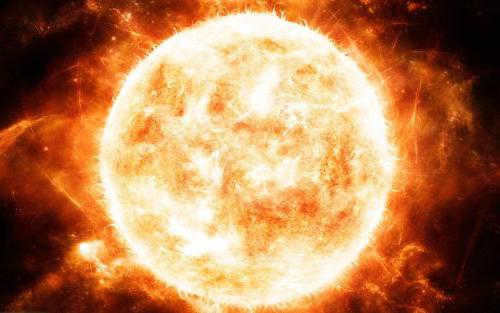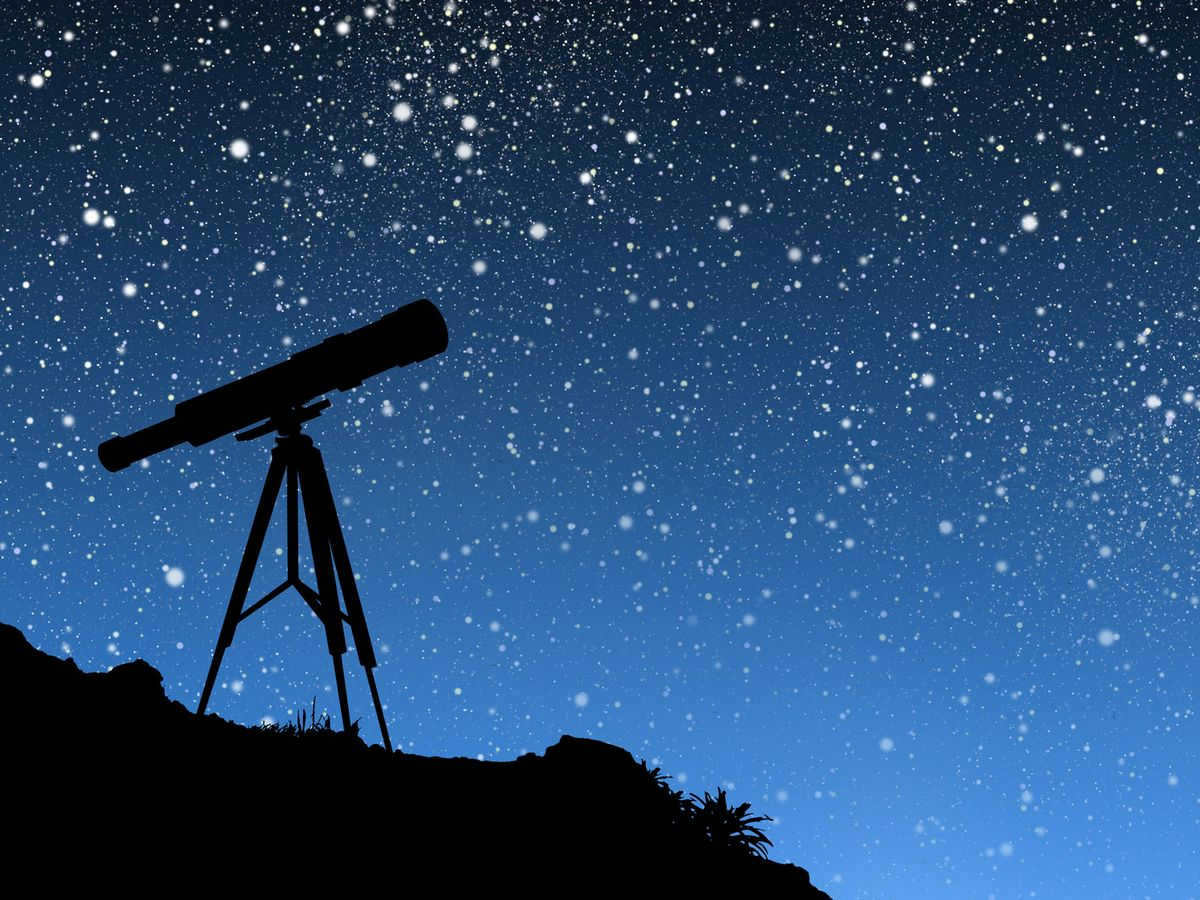
It is never considered by us that there might be life forms existing beyond our own planet, beyond our own solar system. It is a possibility that there could be life on certain planets revolving around a star that is colored blue, white, red, or perhaps even yellow. Conceivably, there could be another planet similar to Earth with inhabitants similar to humans, but our knowledge regarding this topic is still limited. Our space vessels and powerful instruments have identified numerous planets that have the potential for hosting life, but these planets are located at distances of tens of thousands and even millions of light-years away from us.
Blue tardy stars are stars that have a blue hue
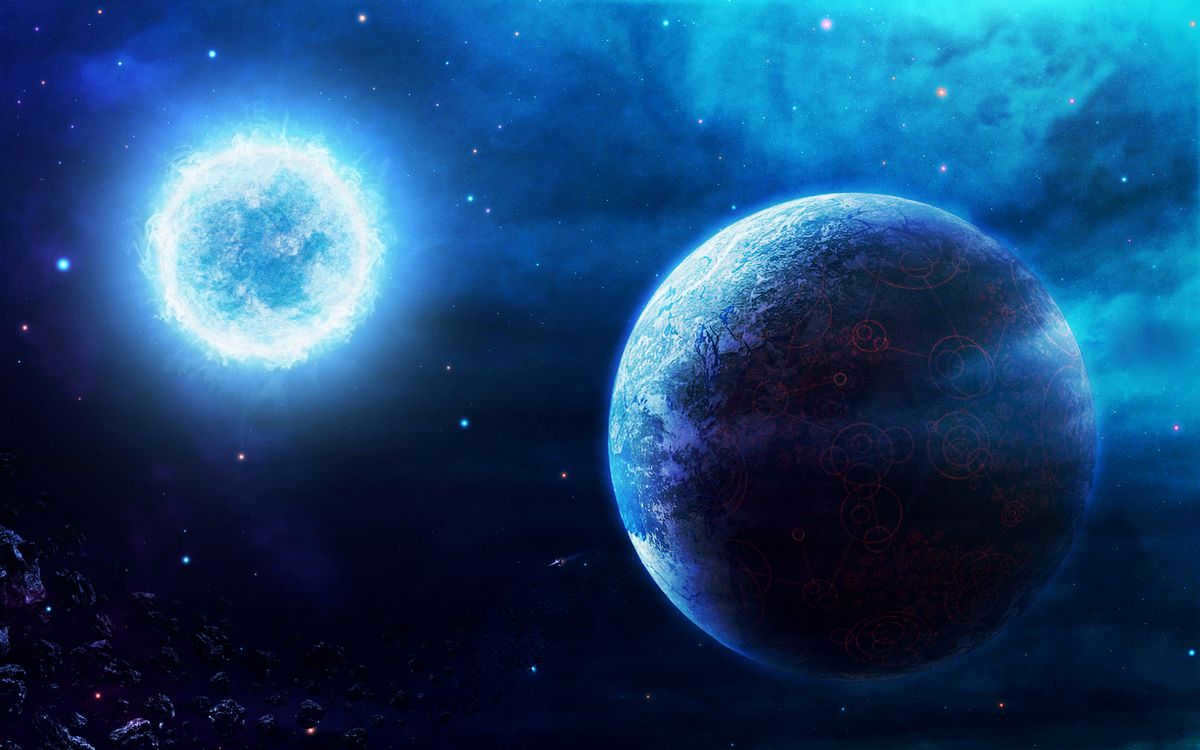
Experts have proposed a number of theories in an attempt to elucidate the origins of these phenomena. The most likely of these posits that these stars, which exhibit a striking blue hue, were previously binary systems that have either recently merged or are currently in the process of merging. The outcome of such a merger is the creation of a new star with significantly greater mass, luminosity, and temperature compared to stars of a similar age.
In order to examine this hypothesis, it is imperative to investigate the pulsation of blue stragglers, as there could potentially be disparities in the astroseismological characteristics between merged stars and regularly pulsating variables. It is important to acknowledge that measuring these pulsations is quite challenging, with factors such as the densely populated stellar sky, slight fluctuations in the pulsations of blue stragglers, and the scarcity of their variables all posing obstacles to this process.
One instance of a merger can be observed in August 2008, when an event impacted object V1309, causing its brightness to increase by several tens of thousands of times, and then return to its original value after a few months. Through 6 years of observations, scientists have determined that this object consists of two stars with a period of circulation around each other of 1.4 days. Based on these findings, scientists have concluded that a merger of these two stars occurred in August 2008.
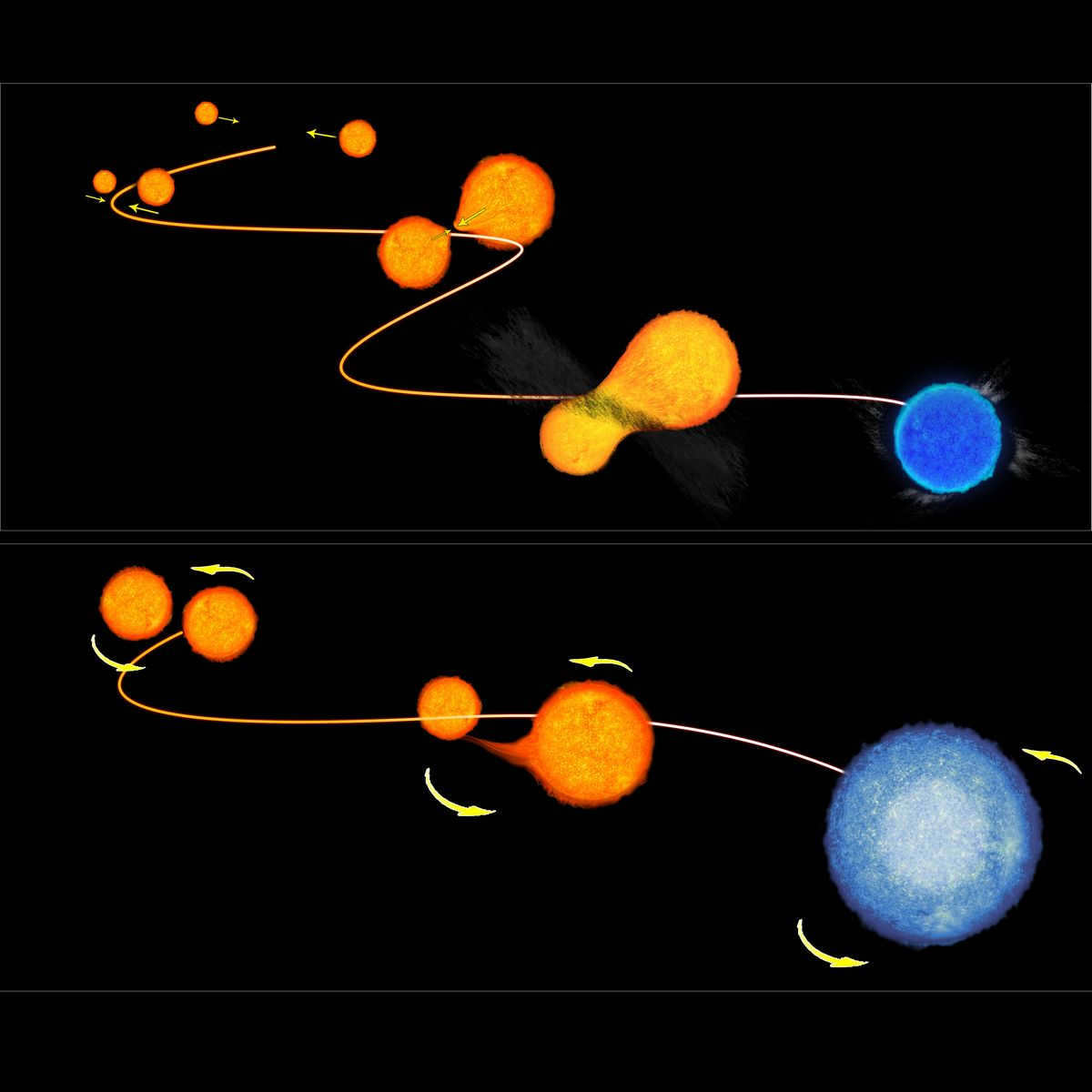
Examples of blue stars’ names
Rigel, Gamma Sails, Alpha Giraffe, Zeta Orion, Tau of the Big Dog, Zeta Korma
White stars are stars that have a white color

In 1844, Friedrich Bessel, the director of the Königsberg Observatory, made a fascinating discovery. He observed a slight deviation in the trajectory of Sirius, the brightest star in the sky. Bessel hypothesized that there must be a satellite orbiting Sirius and calculated that the stars would rotate around their center of mass every fifty years. Unfortunately, Bessel did not receive much support from other scientists as no one was able to detect the satellite, despite its mass being comparable to that of Sirius.
The temperature of this star, which is white in color, reaches 25,000 Kelvin and it has a relatively small radius. This has led scientists to determine that the satellite possesses a high density, measuring at 106 g/cm3. In comparison, the density of Sirius is approximately 0.25 g/cm3, while the Sun has a density of 1.4 g/cm3. In 1917, another white dwarf was found and named after the scientist who made the discovery – van Maanen’s star. This star can be found in the constellation of Pisces.
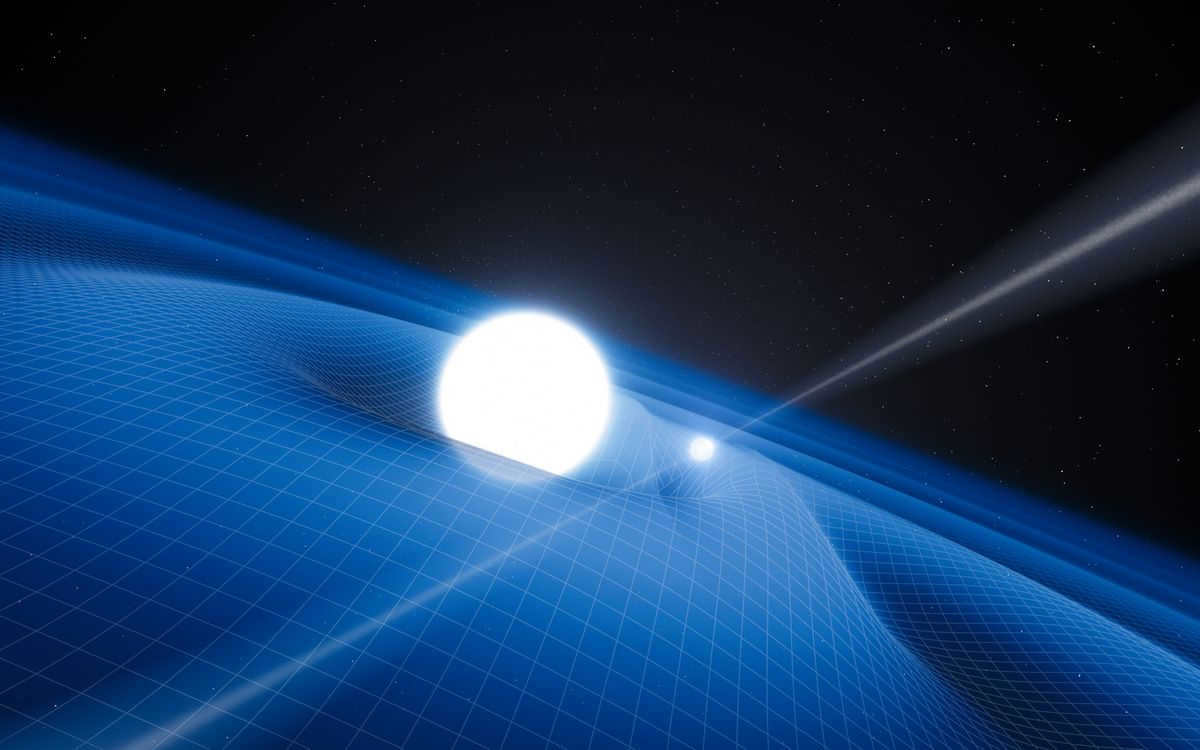
Examples of white star names
Some examples of white stars are Vega in the constellation Lyra, Altair in the constellation Eagle (visible in summer and fall), Sirius, and Castor.
Yellow stars are stars with a yellow color

Small stars of the main sequence, whose mass falls within the range of the Sun’s mass (0.8-1.4), are commonly referred to as yellow dwarfs. These stars are named so due to their characteristic yellow glow, which is emitted during the process of thermonuclear fusion of hydrogen into helium.
The temperature of such stars reaches 5-6 thousand Kelvin, and their spectral classes range from G0V to G9V. The lifespan of a yellow dwarf is approximately 10 billion years. The expansion of the star and its transformation into a red giant is caused by the combustion of hydrogen. Aldebaran serves as a prime example of a red giant. These stars have the ability to create planetary nebulae by shedding their outer gas layers. As a result, the core undergoes a transformation into a white dwarf, characterized by its high density.
If we consider the Hertzsprung-Russell diagram, we can see that yellow stars are typically found in the central region of the main sequence. The Sun can be considered as a typical example of a yellow dwarf, making it a suitable model for studying these types of stars. However, there are other distinct yellow stars in the night sky, such as Alhita, Dabih, Toliman, Hara, and others. These stars are not particularly bright. For instance, Toliman, which is the second closest star to the Sun after Proxima Centauri, has a magnitude of 0 but it is still the brightest among all yellow dwarfs. This star is located in the constellation Centaurus and is part of a complex system consisting of six stars. Toliman belongs to the spectral class G. On the other hand, Dabih, which is situated 350 light-years away, belongs to the spectral class F. Its high brightness, however, is attributed to the presence of a nearby star belonging to the spectral class A0.
Aside from Toliman, the G spectral class also includes HD82943, a star situated on the main sequence. This star, possessing a chemical composition and temperature similar to that of the Sun, harbors two planets of considerable size. However, the orbits of these planets deviate significantly from circular, resulting in frequent close encounters with HD82943. Presently, astronomers have successfully demonstrated that this star once hosted a greater number of planets, but over time it assimilated them all.
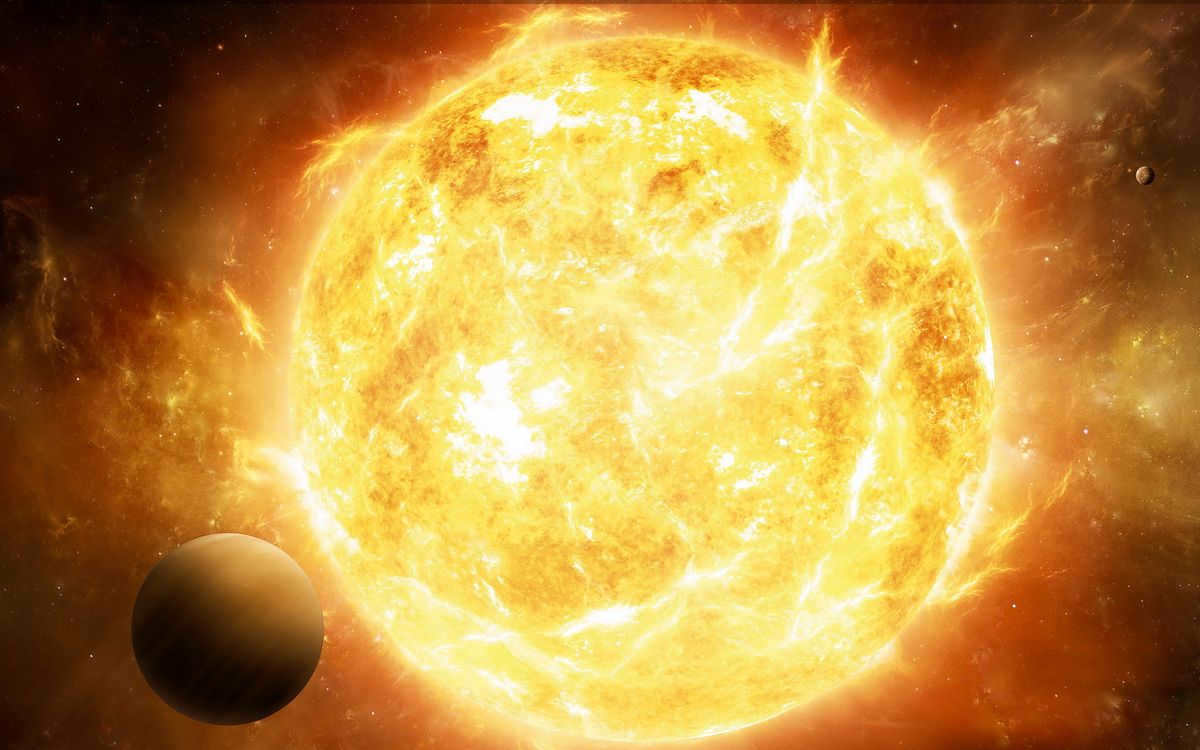
Examples of Names for Yellow Stars
Some examples of yellow stars include Toliman, HD 82943, Hara, Dabih, and Alhita.
Red Stars – Stars with a Red Color
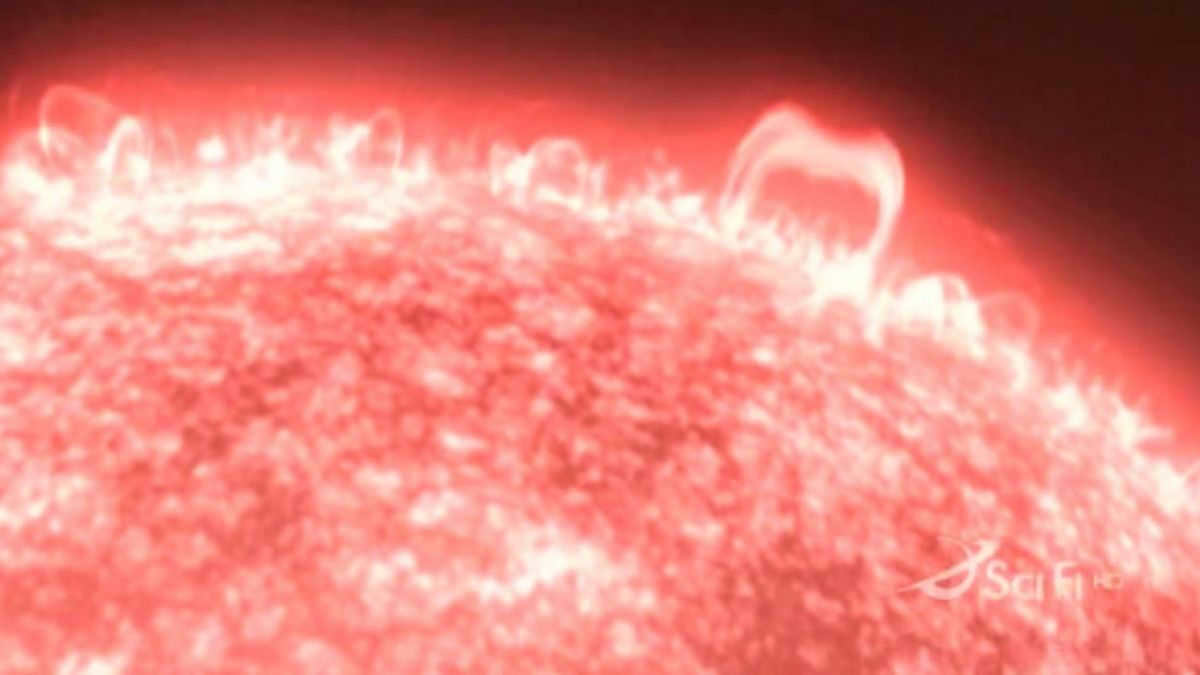
If you have ever gazed through the lens of a telescope and witnessed the mesmerizing sight of red stars illuminating the night sky against a backdrop of darkness, then you will be able to vividly recall that moment as you delve into the subject matter of this article. For those who have yet to experience this phenomenon, I encourage you to seek out these crimson celestial bodies during your next stargazing adventure.
Moreover, there are also two red semi-regular variables known as stars on the list. One of the most famous ones is m Cepheus, which caught the attention of William Herschel due to its unique red color, earning it the nickname “garnet”. These stars exhibit irregular fluctuations in brightness that can persist for periods ranging from several tens to hundreds of days. Such variable stars fall into the category of M-class stars, characterized by their low surface temperatures ranging from 2400 to 3800 K.
Considering the fact that all stars in the rating are subject to change, it is important to provide some clarity in their designations. It is widely accepted that red stars are named using two components – a letter from the Latin alphabet and the name of the variable constellation (e.g., T Hare). The first variable discovered in a specific constellation is assigned the letter R, and so on, up to the letter Z. If there are multiple variables, they are given a double combination of Latin letters – from RR to ZZ. This approach allows for the identification of 334 objects. Additionally, stars can be designated using the letter V along with a sequential number (e.g., V228 of the Swan). The first column of the rating is reserved for the designation of variables.
The following two columns in the table show the positions of the stars in the year 2000.0. Due to the growing popularity of the Uranometria 2000.0 atlas among avid astronomers, the final column of the ranking indicates the search map number for each star listed. In this instance, the initial digit represents the volume number, while the second digit represents the sequential number of the map.
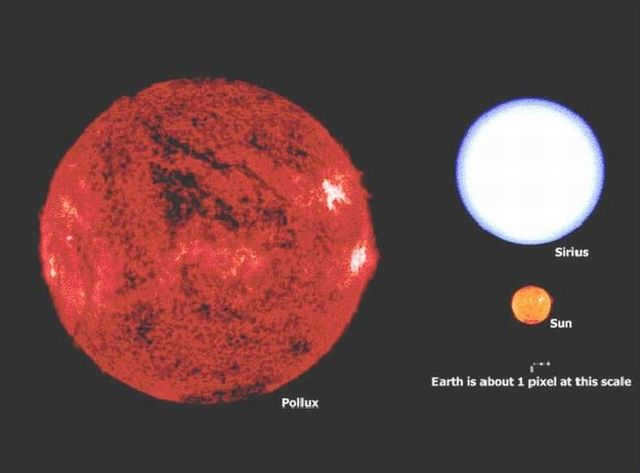
The rating also displays the highest and lowest values of star magnitudes for brightness. It should be noted that stars with lower brightness tend to have a greater saturation of red color. For stars with a known variability period, it is indicated in terms of the number of days, while objects without a known period are labeled as Irr.
Spotting a carbon star doesn’t require much expertise, just a telescope powerful enough to see it. Even if it appears small, its vibrant red hue should catch your eye. So, don’t be discouraged if you can’t immediately locate them. Simply use an atlas to locate a nearby bright star and then navigate from there to the red one.
Examples of red star names

Distinguishing stars based on their color
There exists a vast array of stars with indescribable shades of color. Consequently, a single constellation was given the name “Jewel Box”, consisting primarily of blue and sapphire stars, with a brilliantly shining orange star positioned at its center. In comparison, our Sun has a faint yellow hue.
The primary factor that determines the variation in color among stars is the temperature of their surface. The explanation is straightforward. Light is a form of radiation that behaves like waves. The wavelength of a wave, which measures the distance between its peaks, is incredibly tiny. To visualize this, we would need to divide 1cm into 100,000 identical segments. A few of these segments would constitute the wavelength of light.
Considering the fact that this figure is relatively small, any slight alteration, no matter how insignificant, will result in a transformation of the image we perceive. This is because our eyes interpret different wavelengths of light as different colors. To illustrate, the wavelength of blue light is approximately 1.5 times shorter than that of red light.
Furthermore, it is common knowledge that temperature can directly impact the color of objects. Take, for instance, a metal item placed in a fire. As it becomes hotter, it will change from its original color to red. If the temperature of the fire were to rise significantly, the object’s color would progress from red to orange, then from orange to yellow, followed by yellow turning into white, and ultimately white transitioning to blue-white.
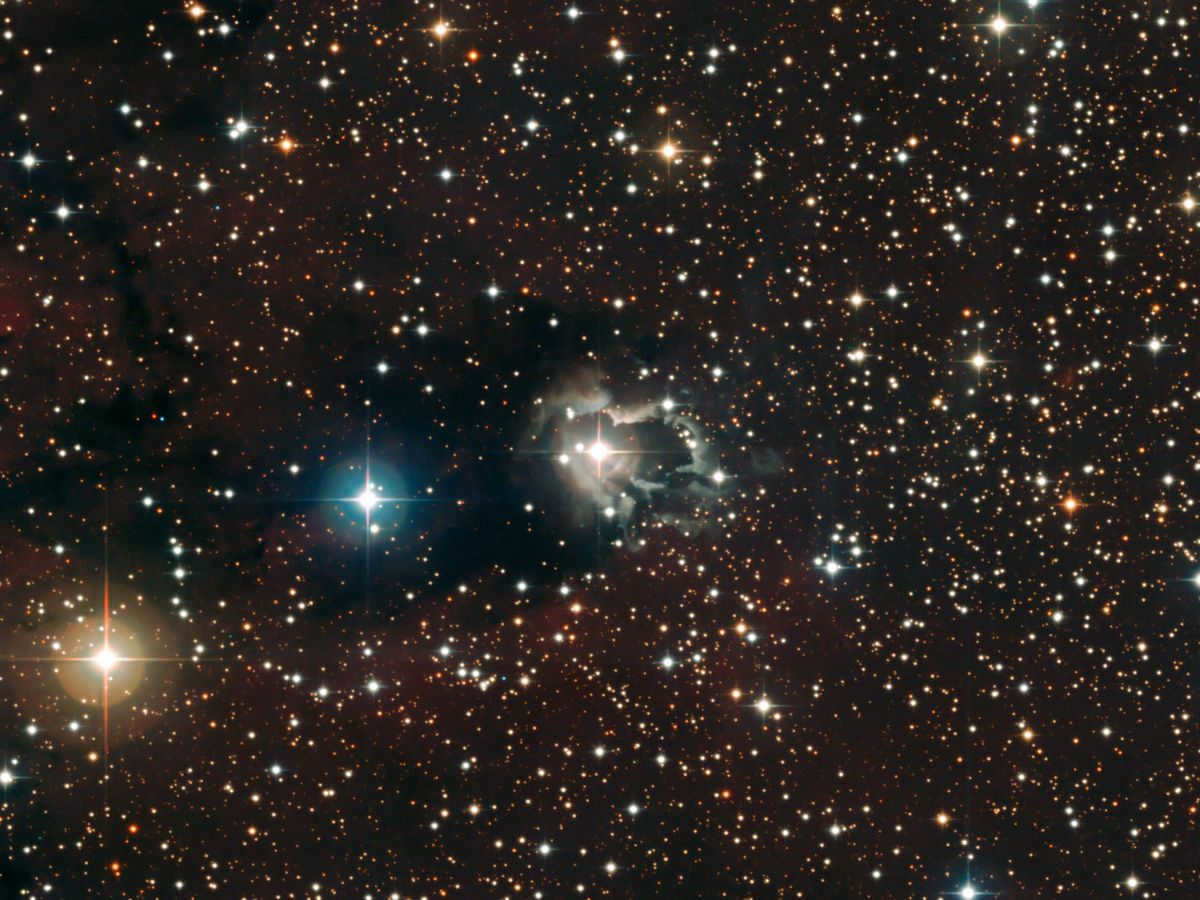
Given that the Sun has a surface temperature of around 5.5 thousand 0 C, it serves as a prime example of yellow stars. However, the hottest stars, which are blue in color, can reach temperatures of up to 33 thousand degrees.
Scientists have established a connection between color and temperature based on the laws of physics. The temperature of an object is directly proportional to its radiation and inversely proportional to its wavelength. Blue waves have shorter wavelengths compared to red waves. Gaseous substances emit photons, and the energy of these photons is directly proportional to the temperature and inversely proportional to the wavelength. This is why the hottest stars emit radiation in the blue-blue range.
Due to the limited supply of nuclear fuel in stars, it eventually gets depleted, resulting in the cooling down of these celestial bodies. This is the reason why stars in their middle age appear yellow, while older stars appear red.
While we can accurately describe the color of the Sun, which is in close proximity to our planet, it becomes more challenging to determine the color of stars that are millions of light-years away. To overcome this challenge, scientists utilize a device called a spectrograph. By passing the light emitted by stars through this device, it becomes possible to conduct spectral analysis on almost any star.
In addition, the color of a star can provide insights into its age. By utilizing mathematical formulas and spectral analysis, it is possible to determine the temperature of the star, which in turn can be used to calculate its age.
Similar Articles:
Every celestial body – whether it be a yellow, blue, or red star – is a luminous mass of gas. The contemporary categorization of these celestial objects is determined by various factors, including their surface temperature, size, and luminosity. The color of a star that is visible on a cloudless night primarily depends on its surface temperature. The hottest stars emit a blue or even bluish hue, while cooler stars emit a red hue. Yellow stars, such as the ones provided below, occupy an intermediate position on the temperature scale. Among these celestial bodies is our very own Sun.
Variances
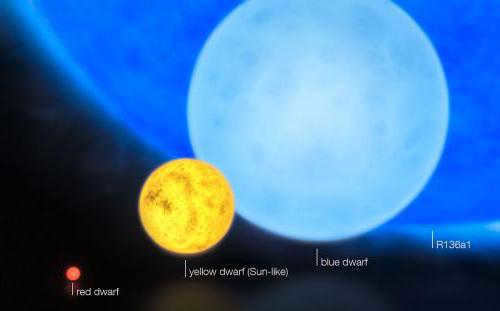
The color of a star is determined by the wavelength of light it emits, which in turn depends on its temperature. The hotter the star, the shorter the wavelength and the closer its color is to white-blue. This is similar to how bodies heated to different temperatures emit light with different colors that we perceive.
Among stars, the coldest ones are red. Their surface temperature only reaches around 3,000 degrees. Yellow stars, like our sun, are hotter, with their photosphere heating up to about 6,000 degrees. White stars are even hotter, ranging from 10,000 to 20,000 degrees. Finally, blue stars are the hottest, with surface temperatures ranging from 30,000 to 100,000 degrees.
Distinctive features
Astronomers have identified a significant number of stars, commonly known as yellow stars. These stars vary in size, mass, luminosity, and other attributes. The surface temperature is a shared characteristic among these celestial bodies.
As stars evolve, some of them may take on a yellow hue. Nevertheless, the majority of yellow stars can be found on the main sequence of the Hertzsprung-Russell diagram. These are often referred to as yellow dwarfs, with the Sun being one of them.
The primary celestial body in the solar system
Dwarfs are given this name due to their relatively small size. The Sun has an average diameter of 1.39 * 109 m and a mass of 1.99 * 1030 kg. Both of these parameters are significantly larger than those of the Earth, but they are not uncommon in space. There are other yellow stars, which are listed below, that are much larger than the Sun.
The surface temperature of our star is 6,000 Kelvin. The Sun is classified as a G2V star. In reality, it emits nearly pure white light, but due to the characteristics of the Earth’s atmosphere, the shorter wavelengths of light are absorbed. This results in a yellow color.
Characteristics of the yellow dwarf
The yellow dwarf stars are characterized by their small size and impressive lifespan. On average, these stars can live for around 10 billion years. Currently, the Sun is at about the midpoint of its life cycle, meaning it has approximately 5 billion years left before it transitions from the main sequence and transforms into a red giant.
Similar in size to the Sun, yellow dwarf stars derive their energy from the fusion of hydrogen into helium. Once the core of a yellow dwarf star depletes its hydrogen supply and begins burning helium, it moves on to the next stage of its evolution.
In addition to the Sun, other examples of yellow dwarf stars include Alpha Centauri A, Alpha North Corona, Mu Botes, Tau Kita, and various other luminaries.
Yellow subgiants
Yellow subgiants are a type of stars that go through a transformation after depleting their hydrogen fuel. Once helium starts to burn in their core, these stars expand and turn into red giants. However, this transition does not happen right away. Initially, the outer layers of the star start to burn, indicating that it has moved away from the main sequence but has not yet fully expanded. This intermediate phase is known as the subgiant stage. Yellow subgiants typically have a mass ranging from 1 to 5 times that of the Sun.

Yellow stars can also go through the subgiant phase, but it is not as prominent for them. Procyon (Alpha Canis Minor) is the most well-known subgiant star today.
A genuine rarity
The yellow stars mentioned above are relatively common in the Universe. However, the same cannot be said for hypergiants, which are a true rarity. These massive and luminous giants have the shortest lifespan of any star and are considered to be the heaviest and largest. While bright blue variables are the most well-known type of hypergiants, there are also white, yellow, and even red hypergiants in existence.

One of the rare cosmic bodies is Ro Cassiopeia, which is an example of a yellow hypergiant. It is 550,000 times brighter than the Sun and located 12,000 light years away from our planet. On a clear night, it can be seen with the naked eye (apparent brightness is 4.52 meters).
Supergiants
Hypergiants are a unique type of supergiants that also include yellow stars. Astronomers believe that they represent a transitional stage in the evolution of stars, transitioning from a blue supergiant to a red one. However, yellow supergiant stars can exist for a long time during this stage of evolution and typically do not die. Throughout the history of space exploration, only two supernovae generated by yellow supergiants have been recorded.
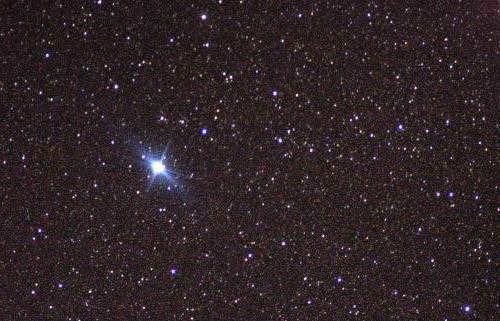
Some of the names for these yellow stars are Canopus (Alpha Kiel), Rastaban (Beta Dragon), Beta Aquarius, and various others.
As you can observe, each star, having a yellow hue akin to the Sun, possesses specific characteristics. However, they all share a common attribute: their color is a result of the heating of the photosphere at distinct temperatures. In addition to the aforementioned stars, these celestial bodies include Epsilon Shield and Beta Raven (luminous giants), Delta Southern Triangle and Beta Giraffe (supergiants), Capella and Windemiatrix (giants), along with numerous other cosmic entities. It is important to note that the color assigned during the classification of an object may not always align with its visible color. This discrepancy arises due to the distortion of true light caused by gas and dust as it travels through the atmosphere. Astrophysicists rely on spectrograph instruments to accurately determine the color, as it provides more precise information than the human eye. Thanks to these instruments, scientists are able to discern blue, yellow, and red stars that exist in distant locations.
Related notes:
Every star, whether it be yellow, blue, or red, is essentially a luminous ball of gas. The current categorization of celestial bodies is determined by various factors, such as surface temperature, size, and luminosity. The color that a star exhibits in the night sky predominantly depends on its surface temperature. The hottest stars tend to appear blue, or even bluish, while the coolest stars appear red. Yellow stars, like the ones mentioned below, are situated in the middle of the temperature spectrum. One notable example of a yellow star is our very own Sun.
Variances
Objects that are heated to varying temperatures release light with diverse wavelengths. The hue perceived by the human eye is contingent upon this factor. The more condensed the wavelength, the higher the temperature of the object, and the more akin its color is to white and blue. This principle is applicable to celestial bodies as well.
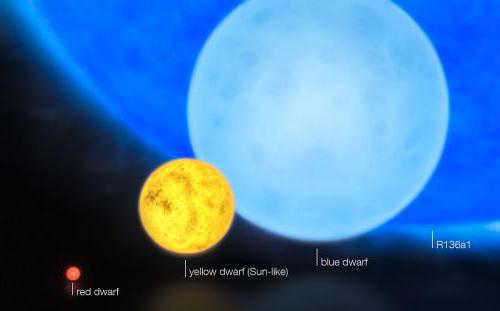
Red luminaries are the least hot. They have a surface temperature of only 3,000 degrees. A yellow star, similar to our sun, is already hotter. Its photosphere reaches temperatures of 6,000 degrees. White stars are even hotter, ranging from 10 to 20 thousand degrees. And finally, blue stars are the hottest of all. Their surface temperature reaches anywhere from 30 to 100 thousand degrees.
General features
Scientists have discovered a multitude of yellow stars, many of which are well-known even to those outside the field of astronomy. These stars vary in size, mass, luminosity, and other characteristics, but they all share a common feature – their surface temperature.
The yellow color of these stars can develop over time through evolution. However, the majority of these stars can be found on the Main Sequence of the Hertzsprung-Russell diagram. They are known as yellow dwarfs, and our Sun is one of them.
The primary celestial body in the system
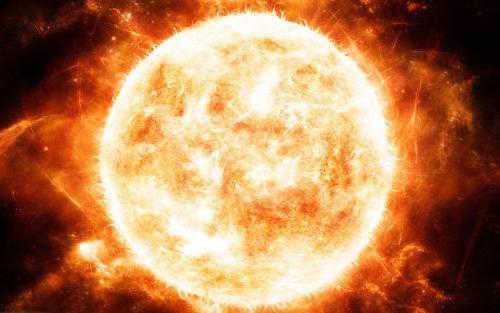
Dwarfs are referred to as such because of their relatively small size. The Sun, for instance, has an average diameter of 1.39*10 9 m and a mass of 1.99*10 30 kg. These parameters are considerably larger than those of the Earth, but in the vastness of space, they are not particularly extraordinary. There are other yellow stars, which are presented below, that surpass the Sun in terms of size.
Our luminary has a surface temperature of 6,000 Kelvin and belongs to the G2V spectral class. It actually emits nearly pure white light, but due to the characteristics of the planet’s atmosphere, the short-wave portion of the spectrum is absorbed, resulting in a yellow tint.
Despite their small size, these luminaries are known for their remarkably long lifespan. On average, they can survive for about 10 billion years. Currently, the Sun is roughly at the halfway point of its own life cycle, which means it still has approximately 5 billion years left before it transitions from the Main Sequence and transforms into a red giant.
This particular star, which is yellow in color and classified as a “dwarf,” shares similar dimensions with the Sun. The primary source of energy for these luminaries is the fusion of hydrogen into helium. Once the core exhausts its hydrogen supply and starts burning helium, they advance to the next stage of evolution.
Aside from the Sun, other yellow dwarfs include Alpha Centauri A, Alpha Coronae Borealis, Mu Velorum, Tau Ceti, and various other luminaries.
Yellow subgiants
When a sun-like star runs out of hydrogen fuel, it undergoes a transformation. As helium ignites in the core, the star expands and becomes a red giant. However, this transition does not occur immediately. First, the outer layers of the star begin to burn. At this stage, the star has already left the Main Sequence but has not yet expanded – it is classified as a subgiant. Typically, the mass of a subgiant star ranges from 1 to 5 times that of the Sun.
Some stars that are even larger in size can also go through the yellow subgiant phase. However, this phase is less prominent for them. One of the most well-known subgiant stars today is Procyon (Alpha Minor Dog).

An extraordinary find
The aforementioned yellow stars are relatively common in the vastness of the Universe. However, hypergiants are an entirely different story. These colossal stars are known for their immense size, brightness, and weight, yet they also have the shortest lifespan. While most hypergiants are classified as bright blue variables, there are also instances of white, yellow, and even red hypergiants.
One remarkable example of these rare celestial bodies is Rho Cassiopeia, a yellow hypergiant with a luminosity that surpasses that of the Sun by an astonishing 550,000 times. Located 12,000 light years away from Earth, Rho Cassiopeia can even be observed with the naked eye on a clear night, boasting an apparent luminosity of 4.52m.

Supergiants
Hypergiants are a unique type of supergiants. Supergiants also encompass yellow stars, which are considered a transitional phase in the evolution of stars from blue to red supergiants. However, yellow supergiants can exist for a significant period of time and generally do not undergo supernova. Only two supernovae have been observed from yellow supergiants in the study of outer space.
Some notable yellow supergiants include Canopus (Alpha Kiel), Rastaban (Beta Dragon), Beta Aquarius, and other celestial objects.
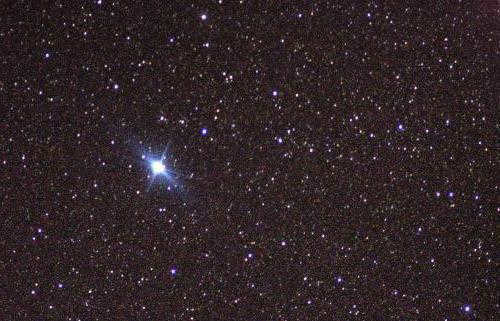
When you gaze up at the night sky on a clear evening, you may notice an array of vibrant stars twinkling above. Have you ever pondered what determines the colors of these celestial luminaries and why they twinkle?
The color of a star is dictated by the temperature of its surface. Similar to a painter’s magical palette, the scattering of these luminous objects produces an infinite variety of hues, resembling precious gems. As the temperature of an object increases, so does the energy of radiation emitted from its surface, resulting in shorter wavelengths.
Even the slightest difference in wavelength can alter the perceived color by the human eye. The longest wavelengths manifest as a reddish hue, which transitions to orange and then yellow as the temperature rises. Eventually, the color becomes white and finally transforms into a bluish-white shade.
The gas envelope surrounding luminaries functions as a perfect emitter. The age and surface temperature of a star can be determined based on its color. However, this color is not assessed visually, but rather through the use of a specialized tool known as a spectrograph.
The analysis of stellar spectra serves as the cornerstone of modern astrophysics. Frequently, the color of celestial luminaries is the sole information accessible to us about them.
Blue stars
Blue stars are known for their size and high temperature. Their outer layers have an average temperature of 10000 Kelvin and can reach 40000 Kelvin for some giant stars.
Recently formed stars, which are at the beginning of their “life journey,” emit light in this temperature range. For instance, Rigel, one of the primary stars in the Orion constellation, has a bluish-white color.
The Sun, the central body of our planetary system, has a surface temperature exceeding 6000 Kelvin. When observed from space, it and other similar stars appear dazzlingly white, but from Earth, they appear more yellowish. Stars made of gold have an average age.
Among the other stars known to us, Sirius is also a white star, although its color is difficult to discern with the naked eye. This is because it is positioned low above the horizon, and its radiation is heavily distorted by multiple refractions on its way to us. In regions with moderate latitudes, Sirius, often appearing to twinkle, can display the entire spectrum of colors in just half a second!
Red stars
Stars with low temperatures, like red dwarfs, have a deep reddish shade. They are known as red dwarfs and have masses less than 7.5% of the Sun’s mass. Their temperature is below 3500 Kelvin, and even though they emit a vibrant array of colors, we perceive them as red.
Enormous celestial bodies that have depleted their hydrogen fuel also exhibit a red or even brown hue. Generally, the radiation emitted by aging and cooling stars falls within this range of the electromagnetic spectrum.
The second prominent star in the constellation of Orion, Betelgeuse, stands out with its distinct red color. Just to its right and slightly above it on a sky map is another star called Aldebaran, which has an orange hue.
The most ancient red star that currently exists, named HE 1523-0901, is located in the Libra constellation. This colossal luminary is classified as a second-generation star and can be found at the outer edges of our galaxy, approximately 7,500 light-years away from the Sun. With an estimated age of around 13.2 billion years, this red star’s existence spans a significant portion of the universe’s estimated age.
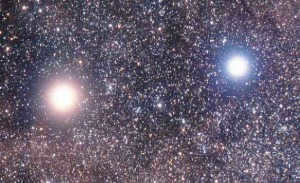
Most people are familiar with the appearance of stars in the night sky – small, twinkling points of light that emit a cool white glow. In ancient times, the mysterious nature of stars puzzled people, who attributed various meanings to them. Stars were believed to be the divine eyes, the spirits of deceased ancestors, and guardians that watched over and protected humanity during the dark hours of the night. Little did they know, the Sun, which they saw every day, was also a star.
What is a star
It took many centuries for humanity to comprehend the true nature of stars. The study of different types of stars, their unique characteristics, and the intricate chemical and physical processes occurring within them has emerged as a new field of knowledge. In ancient times, astronomers could only speculate about the nature of these celestial bodies, unaware that they are not mere specks of light but rather colossal spheres of scorching-hot gas where thermonuclear fusion reactions take place. It is a peculiar paradox that the faint twinkling of starlight conceals the blinding radiance of a powerful nuclear reaction, while the comforting warmth of the sun actually emanates from the mind-boggling heat of millions of kelvins.
All the stars visible in the sky without the aid of a telescope are found within the Milky Way galaxy. Our own Sun is also a member of this galaxy, situated on its outer edges. It is difficult to fathom what the night sky would appear like if the Sun were positioned at the center of the Milky Way. This is due to the fact that the galaxy contains over 200 billion stars.
Ancient astrologers had the ability to provide unique and fascinating insights about the celestial bodies. The Sumerians were able to identify distinct constellations and the zodiac, and they were the first to calculate a complete circle as 360 degrees. They also developed a lunar calendar that could be synchronized with the solar calendar. The Egyptians believed that the Earth was stationary, but they understood that Mercury and Venus orbited the Sun.
In China, the practice of astronomy as a scientific discipline began as early as the end of the third millennium BC, and the first observatories were established in the thirteenth millennium BC.

During their time, the ancient Incas dedicated their studies to the exploration of lunar and solar eclipses. They possessed a deep understanding of the causes behind these celestial phenomena, and were even able to accurately predict their occurrence. Additionally, they conducted observations on meteor streams and tracked the trajectories of comets.
Furthermore, the Incas possessed knowledge about the distinctions between stars and planets. There exists indirect evidence suggesting that they were aware of Galileo and his observations on the atmospheric blurring of Venus’ disk, which is caused by the planet’s own atmosphere.
The ancient Greeks were the pioneers in proving the spherical shape of the Earth and proposing the idea of a heliocentric system. They also made attempts to calculate the diameter of the Sun, although their calculations were erroneous. However, the Greeks were the first to suggest that the Sun was larger than the Earth, challenging the previous belief based on visual observations. It was the Greek astronomer Hipparchus who created the first catalog of stars and classified them based on their brightness. In his scientific work, he identified six classes of brightness and cataloged a total of 850 luminaries.
What captured the attention of the ancient astronomers
What is the foundation of stellar categorization?
Contemporary astronomers, when discussing the various types of stars, are unlikely to mention their luminosity or position in the night sky, unless it is in the context of a historical overview or a lecture aimed at an audience with little knowledge of astronomy.
The modern classification of stars is centered around their spectral analysis. Additionally, the mass, luminosity, and radius of these celestial bodies are typically provided. All of these measurements are taken in relation to the Sun, with its characteristics serving as the standard units of measurement.
The categorization of stars is based on a criterion known as absolute magnitude, which refers to the perceived brightness of a star without the presence of an atmosphere. This value is conventionally measured at a distance of 10 parsecs from the observer’s standpoint.
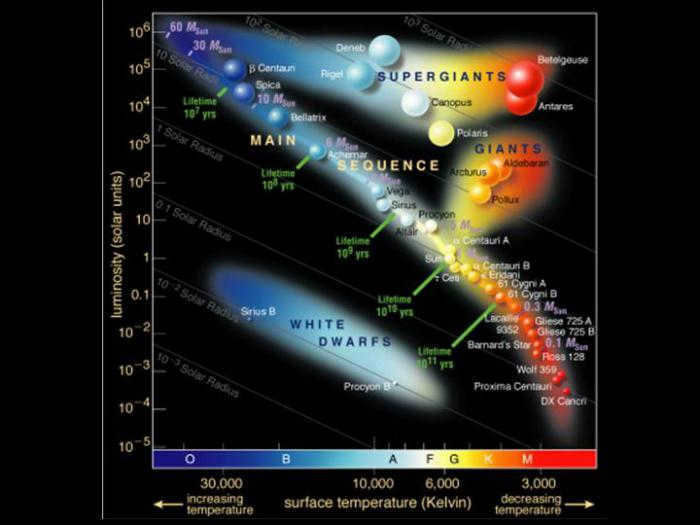
Moreover, variations in brightness and the size of the star are taken into consideration. Currently, types of stars are defined by their spectral class and further classified by their subclass. Astronomers Russell and Hertzsprung independently examined the relationship between luminosity, absolute stellar magnitude, surface temperature, and spectral class of stars. They plotted a diagram with corresponding coordinate axes and discovered that the results were not random at all. The stars on the diagram were organized into distinct groups. By knowing the spectral class of a star, the diagram enables the determination of its absolute stellar magnitude, at least with an approximate level of accuracy.
The Birth of Stars: A Closer Look
This diagram serves as compelling evidence supporting the contemporary theory regarding the development of celestial bodies. The chart provides a clear depiction of the most prevalent class, known as the main sequence stars. These stars are currently at the most common stage of development in our Universe. This stage represents the point at which a star’s energy expenditure for radiation is balanced by the energy acquired through thermonuclear reactions. The duration of this evolutionary stage is determined by the mass of the celestial body and the proportion of elements heavier than helium.
The currently accepted theory of stellar evolution posits that stars undergo an initial stage of evolution.
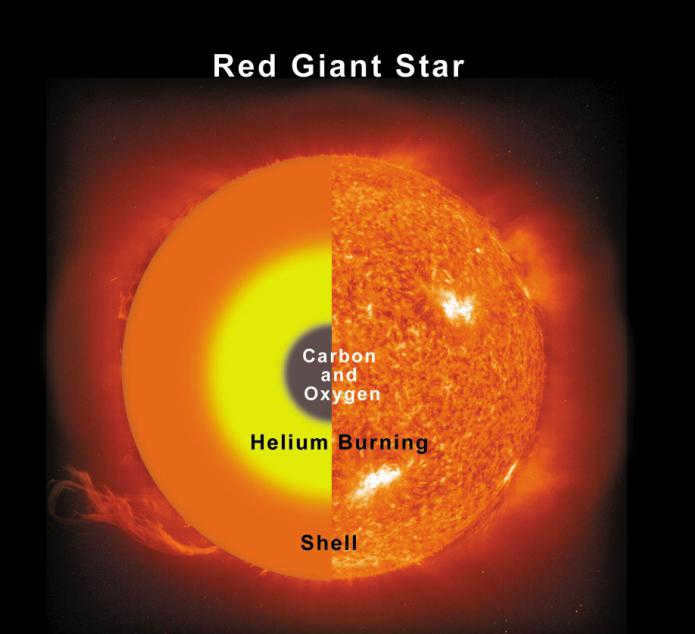
Yellow stars come in various types and are known for their rarity. These massive gas clouds undergo a process of self-compression, gradually transforming into spherical shapes due to their own gravitational forces. As the compression intensifies, gravitational energy is converted into thermal energy, resulting in the heating of the gas. Once the temperature reaches a staggering 15-20 million K, a thermonuclear reaction ignites within the newly formed star. This reaction brings an end to the gravitational contraction process.
Initially, the primary reactions within the young star’s core are dominated by the hydrogen cycle. This stage of a star’s life is the longest. The diagram above illustrates the most massive main sequence stars that are in this developmental stage. Eventually, the hydrogen within the star’s core depletes and transforms into helium. As a result, thermonuclear fusion can only occur at the outer regions of the core. The star becomes more luminous, its outer layers expand greatly, and the temperature decreases. The celestial object transitions into a red giant. This particular phase of a star’s life
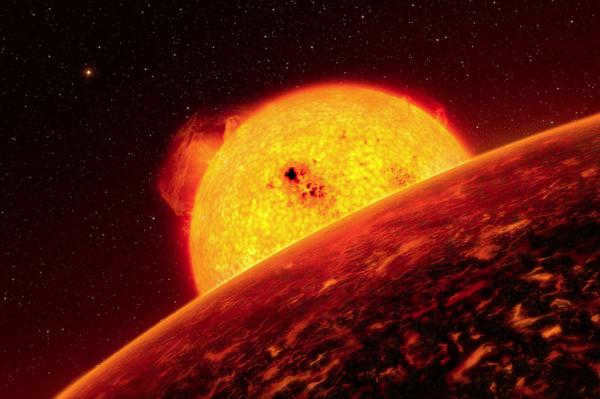
The length of this text is significantly shorter compared to the previous one. Its destiny is not well understood. There are various hypotheses, but they have yet to be substantiated. The prevailing theory suggests that when there is an excess of helium, the core of the star collapses under its own mass. This results in a rise in temperature and a thermonuclear reaction of the helium. The extreme temperatures cause the star to expand once again, transforming it into a red giant. The subsequent fate of the celestial body, as per scientific speculation, is contingent upon its mass. However, these theories are merely the product of computer simulations and lack confirmation from observations.
Cooling stellar bodies
It is believed that low-mass red giants will undergo a process of contraction, transforming into dwarfs and gradually decreasing in temperature. On the other hand, medium-mass stars have the potential to evolve into planetary nebulae, where the core remains intact at the center of this formation, gradually cooling off and eventually transforming into a white dwarf. In cases where the central star emits a substantial amount of infrared radiation, the expanding gas shell of the planetary nebula creates favorable conditions for the activation of cosmic masers.
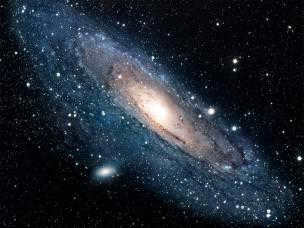
Enormous celestial bodies, when they contract, can reach such immense pressure that electrons are essentially compressed into atomic nuclei, transforming into neutrons. Because there are no electrostatic repulsion forces between these particles, a star has the potential to shrink to a size of only a few kilometers. At that point, it would be an astounding 100 million times denser than water. This type of star is referred to as a neutron star and essentially functions as an enormous atomic nucleus.
Supermassive stars persist, undergoing a series of thermonuclear reactions to synthesize helium into carbon, then oxygen, followed by silicon, and ultimately iron. It is during this phase of thermonuclear reaction that a supernova explosion occurs. Supernova stars, in turn, can transform into neutron stars or, if their mass is sufficiently large, continue to collapse to a critical threshold and give rise to black holes.
Dimensions
The classification of stars based on their size can be approached in two different ways. One way to determine the physical size of a star is by measuring its radius, using the Sun’s radius as a unit of measurement. Stars can be categorized as dwarfs, medium-sized, giants, and supergiants. Interestingly, the Sun itself is considered a dwarf in this classification. Neutron stars, on the other hand, can have radii as small as a few kilometers, while a supergiant star could encompass the entire orbit of the planet Mars.
Another approach to understanding the size of a star is by considering its mass, which is closely connected to its diameter. Generally, larger stars have lower densities, while smaller stars have higher densities. However, this criterion is not as straightforward. Stars that are 10 times larger or smaller than the Sun are quite rare, with most falling within the range of 60 to 0.03 solar masses. As a reference point, the density of the Sun is 1.43 g/cm3. In contrast, white dwarfs can have densities as high as 1012 g/cm3, while the densities of rarefied supergiants can be millions of times less than that of the Sun.
In the standard classification of stars, the distribution of mass is categorized as follows: small stars have masses ranging from 0.08 to 0.5 solar masses, moderate stars have masses ranging from 0.5 to 8 solar masses, and massive stars have masses of 8 or more solar masses.
Classification of stars based on color
The classification of stars based on color is actually determined by their spectral characteristics rather than their visible brightness. The emission spectrum of a star is influenced by its chemical composition, which in turn determines its temperature.
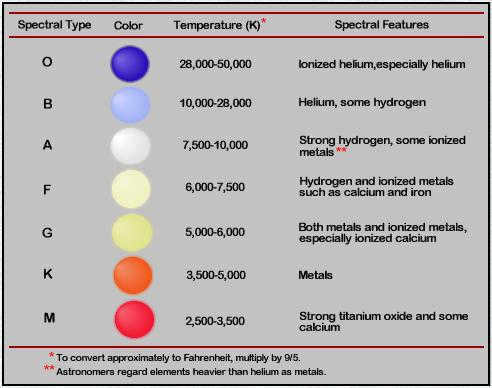
The Harvard classification, which was developed in the early 20th century, is the most commonly used system for categorizing stars by color. According to this classification, stars are divided into 7 types based on their color.
For example, stars with the highest temperature, ranging from 30,000 to 60,000 K, are classified as class O. These stars appear blue in color and have a mass of up to 60 solar masses (s. m.) and a radius of 15 solar radii (s. r.). The hydrogen and helium lines in their spectrum are relatively faint. The luminosity of these celestial objects can reach up to 1,400,000 solar luminosities (s. s. s.).
Stars classified as Class B have temperatures ranging from 10 to 30 thousand K. They are characterized by their white-blue color and have a minimum mass of 18 solar masses, with a minimum radius of 7 solar radii. The lowest luminosity observed in this class is 20 thousand times that of the Sun, and their spectrum shows enhanced hydrogen lines.
Class A stars, on the other hand, have temperatures ranging from 7.5 to 10 thousand K and are white in color. These stars have a minimum mass of 3.1 solar masses and a minimum radius of 2.1 solar radii. The luminosity of Class A stars ranges from 80 to 20 thousand times that of the Sun. Their spectrum exhibits strong hydrogen lines and the presence of metal lines.
F-class stars have a yellow-white color, although they may appear white. Their temperature ranges from 6 to 7.5 thousand K, their mass varies from 1.7 to 3.1 solar masses, and their radius ranges from 1.3 to 2.1 solar radii. The luminosity of these stars can range from 6 to 80 solar luminosities. In the spectrum of F-class stars, the lines of hydrogen are weakened, while the lines of metals are strengthened.
Therefore, all types of white stars belong to the A to F classes. Following the classification, yellow and orange stars are next in line.
Stars of Different Colors: Yellow, Orange, and Red
The classification of stars by color is based on their temperature, size, and luminosity. The color of a star changes from blue to red as its temperature decreases and its size and luminosity decrease as well.
Yellow stars belong to class G, which includes our Sun. These stars have a temperature ranging from 5 to 6 thousand K and are yellow in color. They have a mass ranging from 1.1 to 1.7 times that of the Sun, and a radius ranging from 1.1 to 1.3 times that of the Sun. Their luminosity ranges from 1.2 to 6 times that of the Sun. Spectral lines of helium and metals are intense in these stars, while hydrogen lines are weaker.
Stars belonging to class K have a temperature ranging from 3.5 to 5 thousand K. They appear yellow-orange, but their true color is orange. These stars have a radius ranging from 0.9 to 1.1 times that of the Sun, and a mass ranging from 0.8 to 1.1 times that of the Sun. Their brightness varies from 0.4 to 1.2 times that of the Sun. Hydrogen lines are almost imperceptible in these stars, while metal lines are very strong.
The most fascinating and tiniest stars fall into the category of class M. Their temperature ranges from a mere 2.5 to 3.5 thousand K and they exhibit a red appearance, although in reality these entities possess an orange-red shade. These stars possess a mass ranging from 0.3 to 0.8 c. m. and a radius between 0.4 and 0.9 c. r. Their luminosity is a mere 0.04 to 0.4 s.s. These stars are in their final stages of life. Only the recently discovered brown dwarfs possess a lower temperature than them, leading to their classification as M-T.
This study has been conducted by a 1st grade student at MOU SOSH No. 25.
The objective of the research is to determine the reason behind the varying colors of stars in the sky.
Methods and techniques: Employing observation, experimentation, comparing and analyzing the results of observations, visiting the planetarium, and utilizing various sources of information.
Collected information: Stars consist of glowing balls of gas. The nearest star to us is the Sun. Each star possesses its own unique color. The color of a star is determined by the temperature on its surface. After conducting experiments, I discovered that heated metal initially emits a red glow, then transitions to yellow, and finally becomes white as the temperature rises. This same phenomenon applies to stars. The red stars are the coolest, while the white (and even blue!) stars are the hottest. Massive stars are hot and white, while lighter, less massive stars are red and relatively cool. Additionally, the color of a star can also indicate its age. Young stars are the hottest, emitting white and blue light. Older stars, as they cool down, emit red light. Middle-aged stars emit yellow light. The amount of energy emitted by stars is so immense that we are able to observe them from the great distances they are located from us: tens, hundreds, and even thousands of light years away!
Summary:
1. Stars come in a variety of colors. The color of a star is determined by its surface temperature.
2. The age and mass of a star can be determined from its color.
3. Stars are visible to us due to the immense energy they emit.
Download:
Preview:
XIV city scientific-practical conference of schoolchildren
Why do stars have different colors?
Supervisor: Marina Viktorovna Mukhina, elementary school teacher
Stars are captivating and mysterious; they can be admired indefinitely. Throughout history, people have attributed great significance to these celestial bodies. From ancient times to the present, astronomers have claimed that the arrangement of stars in the sky has a profound impact on almost every aspect of human life. Stars are used to predict the weather, create horoscopes, and navigate lost ships at sea. But what are these shining points of light truly?
The enigma of the celestial heavens holds fascination for all youngsters without exception. Scientists and stargazers have conducted extensive investigations, unraveling numerous enigmas. Countless volumes have been penned about the celestial bodies, numerous informative films have been produced, and yet, many children remain unaware of all the secrets held within the starry expanse.
For me personally, the starry sky continues to bewilder. The more I gaze upon the stars, the more inquiries arise. One such query being: what hues do these shimmering, captivating stars possess.
Objective of the research: to elucidate the reasons behind the varying colors of stars within the firmament.
The objectives I set for myself were as follows: 1. to seek out answers by engaging in conversations with knowledgeable individuals, perusing encyclopedias, books, and online resources;
2. to conduct firsthand observations of stars with the naked eye and through the aid of a telescope;
3. Conducting an experiment to demonstrate that the temperature of a star determines its color;
4. Presenting information about the vastness of the stellar universe to fellow students.
The focus of this study is celestial bodies, specifically stars.
The research revolves around examining the various parameters of stars.
- Engaging in in-depth reading of specialized literature and watching informative science programs;
- Exploring the night sky using a telescope and specialized software;
- Conducting an experiment to investigate the correlation between an object’s temperature and its color.
The outcome of my efforts is that my classmates have developed a newfound interest in this fascinating subject.
I have frequently gazed up at the celestial expanse, adorned with numerous radiant dots. The stars are particularly prominent during the nighttime hours and under clear skies. Their distinctive, captivating radiance has always captivated my attention. Astrologers speculate that they possess the power to shape an individual’s destiny and future. However, few can provide a definitive answer as to their true nature.
After delving into the relevant literature, I discovered that a star is a celestial entity where thermonuclear reactions occur, resulting in a massive luminous sphere of gaseous matter.
The Sun, which is the closest and most famous star to us, appears to be very large compared to other stars. Its brightness during the day outshines all other stars, making them invisible. While the Sun is located 150 million kilometers away from Earth, the star Centaurus, which is closer than others, is already 42,000 billion kilometers away.
So, how did the Sun come into existence? After researching, I discovered that, like other stars, the Sun originated from a cluster of cosmic gas and dust known as a nebula. Over time, this gas and dust compressed and formed a dense mass, which heated up to 15,000,000 Kelvin, the temperature at the Sun’s core.
Therefore, it is evident that stars are composed of gas in the vast Universe. However, the question remains: why do they emit different colors of light?
Chapter 2: The temperature and color of stars
Initially, my goal was to locate the most radiant stars. I made the assumption that the Sun was the brightest star in the sky. Given my limited access to advanced equipment, I relied on my naked eye to estimate the luminosity of the stars. Then, I used my telescope to further analyze their brightness levels. When observed through a telescope, stars appear as distinct points varying in brightness. Unfortunately, the Sun can only be observed using specialized filters. However, it’s important to note that not all stars are visible, even with the assistance of a telescope. As a result, I had to turn to various sources of information for further insights.
I have reached the following conclusions: the most prominent stars are: 1. The giant star R136a12 (located in the star formation region 30 Goldfish); 2. The giant star VY SMa (found in the constellation of the Big Dog); 3. Deneb (located in the constellation α Swan); 4. Rigel (found in the constellation β Orion); 5. Betelgeuse (located in the constellation α Orion). I received assistance from my father in identifying the names of these stars using the Star Rover program for iPhone. In this case, the first three stars emit a bluish glow, the fourth emits a white-blue light, and the fifth emits a reddish-orange hue. The discovery of these brightest stars was made by scientists utilizing NASA’s Hubble Space Telescope.
Throughout my research, I have observed that the brightness of stars is influenced by their color. However, the question remains: why do stars exhibit such diversity?
Let’s examine the Sun, an easily visible star. Since our earliest memories, we have associated it with a yellow hue because that is its actual color. I embarked on a journey to study the characteristics of this celestial body. Its surface temperature measures approximately 6,000 degrees. I acquired knowledge about other stars through encyclopedias and online resources. It transpired that stars exist in various shades. Some exhibit a white appearance, while others radiate blue or orange hues. There are even stars that are white or red in nature. Evidently, the coloration of a star is contingent upon the temperature present on its surface. The most scorching stars manifest as white or blue to our eyes, boasting surface temperatures ranging from 10 to 100,000 degrees Celsius. Stars with a moderate temperature display a yellow or orange hue. The coolest stars, on the other hand, appear red and possess a surface temperature of approximately 3,000 degrees. Astonishingly, these celestial beings are significantly hotter than the flames of a campfire.
My parents and I conducted an experiment in which we heated an iron spokeshave using a gas burner. Initially, the spokeshave had a gray color. However, as we heated it, the spokeshave became hot and turned red. The temperature of the spokeshave continued to rise. After allowing it to cool down, the spokeshave returned to its original gray color. From this experiment, I deduced that the color of a star changes as its temperature increases. Interestingly, this phenomenon differs from how humans react to temperature changes. Typically, humans turn red when they are hot and blue when they are cold. In contrast, with stars, the hotter they are, the bluer they appear, and the colder they are, the cooler they appear.
As we are aware, when metal is heated, it initially starts to emit a red glow, then transitions to yellow, and eventually reaches a white (or even blue) glow as the temperature rises. This same principle applies to stars. The ones that appear red are the coldest, while the ones that appear white (or even blue) are the hottest.
Chapter 3: The Mass of a Star and Its Color. The Age of the Star.
At the age of 6, my mother and I visited the planetarium in Omsk city, where I acquired knowledge about the diverse sizes of stars. It was fascinating to learn that stars vary in size, weight, and color. With the guidance of adults, I attempted to arrange the studied stars in order of their weight. During this activity, I made an interesting observation! Blue stars turned out to be heavier than white stars, white stars were heavier than yellow stars, yellow stars were heavier than orange stars, and orange stars were heavier than red stars.
One can determine the age of a star based on its color. Young stars are the hottest and emit white and blue light. As stars age and cool down, they emit red light. Stars in their middle age emit yellow light.
The magnitude of energy emitted by stars is so immense that we can observe them despite the vast distances that separate us: tens, hundreds, or even thousands of light years away!
To observe a star, we need its light to traverse through the Earth’s atmospheric layers. The fluctuating air layers tend to refract the light, creating the illusion of twinkling stars. However, in reality, the stars emit a continuous, uninterrupted stream of light.
The Sun is not the largest star, but rather one of the stars known as Yellow Dwarfs. During its birth, this star consisted primarily of hydrogen, which has since undergone thermonuclear reactions to transform into helium. Over the course of its approximately 5 billion year existence, the Sun has burned about half of its hydrogen fuel. Consequently, it will continue to “live” for as long as it has already existed. However, once the hydrogen is nearly depleted, the Sun will expand and become a Red Giant, significantly impacting Earth. This transformation would lead to unbearable heat, boiling oceans, and the impossibility of sustaining life.
Thus, through our research, my classmates and I have acquired fresh knowledge regarding the nature of stars, as well as the factors influencing their temperature and color.
Observe the night sky to witness the characteristics of stars. During clear, dark nights with average eyesight, one can perceive numerous stars, some of which may be faintly discernible, while others radiate with such intensity that they remain visible even when the sky retains a blue hue! Thus, what accounts for the varying brightness levels of stars?
There are two primary factors. Firstly, certain stars are simply in closer proximity to us, while others, despite their considerable distance, possess unfathomable dimensions. Let us now direct our attention to a small region of the southern celestial hemisphere.

Alpha Centauri (yellow), is one of the most prominent stars in the night sky. It bears a resemblance to our own star, but it is slightly larger and brighter, and it has a similar color. The star’s brilliance can be attributed to its relatively close proximity to us, as it is only 4.4 light-years away in cosmic terms.
Now, let’s take a look at the second brightest star (just above blue), which is known as Beta Centauri.
Beta Centauri is not actually a neighbor of Alpha Centauri. While the yellow star is a mere 4.4 light-years away from Earth, Beta Centauri is situated about 530 light-years from our planet. In other words, it is more than 100 times farther away!
Why does Beta Centauri shine almost as brightly as Alpha Centauri? The reason for this is that Beta Centauri is a different type of star! Stars can be classified by their color, and while Alpha Centauri is a yellow “G-type” star, similar to our Sun, Beta Centauri is a blue “B-type” star.
Each star has five primary parameters: 1. Luminosity, 2. Color, 3. Temperature, 4. Size, 5. Mass. These characteristics are interconnected, with the color of a star depending on its temperature, and the intensity of its brightness depending on both temperature and size.
The color and temperature of a star
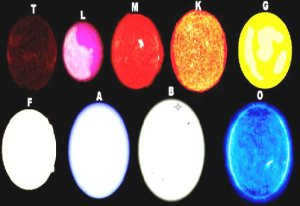
Despite their various hues, stars come in three primary colors: red, yellow, and blue. Our very own Sun belongs to the yellow star category. The shade of a star depends on its temperature. Yellow stars have scorching surface temperatures of up to 6000° C. Meanwhile, red stars are relatively cooler, with surface temperatures ranging from 2000° C to 3000° C. On the other hand, blue stars are the hottest of them all, boasting surface temperatures that can reach as high as 10,000° C to 100,000° C.
During a cloudless evening, if you take a moment to gaze at the sky, you will be greeted by a plethora of vibrant stars. Have you ever pondered about the factors that influence the twinkle and hue of these celestial bodies?
Some binary stars may have a striking resemblance in terms of brightness and often exhibit similar hues. One possible explanation for this phenomenon is to acknowledge the current evolutionary stage of the constituent stars. Consequently, stars with comparable luminosity are likely to share similar ages and therefore manifest themselves at corresponding evolutionary phases given their respective masses. Considering that main sequence and smaller stars boast long lifespans that span billions to tens of billions of years, it is improbable for their observed colors – or surface temperatures, for that matter – to deviate significantly at the time of observation.
Even the slightest deviation in wavelength can alter the perceived color by the human eye. The longest wavelengths are associated with a reddish tint, and as the temperature rises, it transitions through shades of orange and yellow before culminating in a white-blue hue.
The gas envelope of the luminaries functions as an ideal emitter. The age and surface temperature of a star can be calculated based on its color. Of course, the hue in this scenario is not determined “by eye”, but with the assistance of a specialized device called a spectrograph.
Furthermore, due to the substantial separations of most stars, we can swiftly minimize the impact of any physical interactions between the components. This indicates that each star evolved independently from one another. Under the aforementioned circumstances, statistics reveal that the most prevalent types of pairings consist of yellow main sequence stars that are similar in nature to the Sun. Prominent examples include α Centauri, p Eridani, and 61 Swan.
Some stars may also exhibit notable variations in magnitude, possibly indicating substantial disparities in color. Notable examples of such systems include Antares and Albireo. It is likely that these systems differ significantly in terms of their mass and evolutionary stage. Since larger stars go through their life cycles before smaller ones, the primary star in these systems is likely to belong to later spectral classes, while the companion star is expected to be earlier in both spectral class and evolutionary stage, thus appearing hotter. This contrast in colors between the stars is what makes them particularly captivating when observed through a telescope.
The study of stellar spectra serves as the bedrock of modern astrophysics. Often, the only information we have at our disposal about celestial objects is their color.
Blue stars
The largest and hottest stars are those with a blue color. The average temperature of their outer layers is around 10,000 Kelvin, and some individual blue stars can even reach temperatures as high as 40,000 Kelvin.
In this particular case, the supergiant star has already evolved away from the main sequence, while its younger companion continues to shine brightly on the main sequence. According to the theory of stellar evolution, over time, Albireo will eventually enter the red giant phase, which will increase the contrast between the two stars before the companion also evolves away from the main sequence.
There are actually numerous exceptions to these scenarios involving double stars. Some systems exhibit the opposite behavior, likely due to different evolutionary changes. For instance, one component may enter the helium burning phase and reemerge as a bright star. Another potential explanation is mass transfer from an undetectable star or an invisible companion that cannot be observed through a telescope.
Recently formed stars that are just embarking on their “life journey” emit light in this range. Take Rigel, for instance, which is one of the two primary stars in the constellation of Orion and has a bluish-white hue.
Golden stars
The primary star of our solar system the Sun – possesses a surface temperature exceeding 6000 Kelvin. When observed from outer space, it and other similar celestial bodies emit a brilliant white light, but when seen from the Earth, they have a yellowish hue. These radiant stars are considered to be of average maturity.
Aitken firmly concludes based on these overall findings
Among the other well-known celestial bodies, the white star that goes by the name Sirius possesses a color that is not easily observed with the naked eye. This is due to its relatively low position in the sky, which causes its radiation to undergo significant distortion through multiple refractions as it travels towards us. In regions with moderate latitudes, Sirius often appears to flicker and is capable of displaying the full spectrum of colors in just half a second!
Without a doubt, this subjective phenomenon occurs frequently, but it is not the sole cause. There are actual and highly noticeable variations in the spectral classes of the components of binary stars, which directly correspond to their differences in color and brightness. Additionally, the primary star’s absolute magnitude also plays a role in these variations.
Nevertheless, Aitken adequately summarizes the most crucial of these discoveries. Numerous researchers have examined the correlation between magnitude and spectral class in the constituent stars of binary systems, including Drs. S.; “An analysis of the spectra of visual binary stars” Lick Observatory.
Scarlet Stars
Stars with low temperatures possess a deep crimson shade, such as crimson dwarfs with masses less than 7.5% of the Sun’s. Their temperature falls below 3500 Kelvin, and despite emitting a vibrant array of colors and hues, we perceive it as scarlet.
Gigantic luminaries that have depleted their hydrogen fuel also exhibit a red or even brownish appearance. In general, the radiation emitted by ancient and cooling stars falls within this range of the electromagnetic spectrum.
"A meticulous examination of the data for 238 pairs unequivocally demonstrated". Aitken subsequently made an accurate conclusion by stating. Lau, align harmoniously with actual disparities in spectral classification. Following Aitken’s remarks, little has changed in our comprehension of this subject, except for a more precise understanding of the processes involved in the formation and evolution of binary stars.
What is the foundation of stellar classification?
In the field of astronomy, numerous articles have been published since then that have enhanced our understanding. Recent studies of this nature have expanded the scope of stellar surveys. This conclusion also holds true for individual stars that possess extensive data. Aitken also correctly concludes that these characteristics are applicable to individual stars, thus these words are relevant to them.
The distinctive red tint belongs to the second major star in the Orion constellation, Betelgeuse. and just to its right and above it on a sky map is Aldebaran, which has an orange color.
The oldest red star in existence, HE 1523-0901, can be found in the Libra constellation. This giant second-generation luminary is located on the outskirts of our galaxy, approximately 7500 light-years away from the Sun. Its approximate age is 13.2 billion years, which is almost as old as the Universe itself.
Additionally, these stars follow the mass-luminosity relationship, indicating that the components of double stars possess the same characteristics as individual stars of corresponding mass and magnitude. One significant breakthrough in observational astronomy was the development of photographic and photometric techniques to capture and analyze stellar colors. This advancement replaced the subjective and unreliable practice of visually observing star colors with the naked eye.
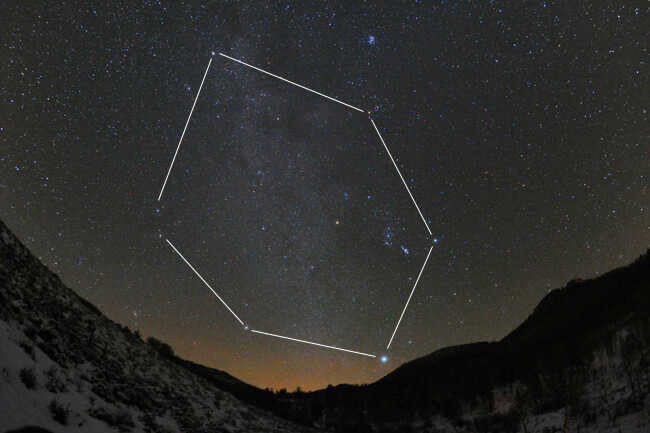
It is a well-known fact that the appearance of stars in the nighttime sky is familiar to all. These celestial bodies, small and luminous, emit a chilly white glow. In days of yore, mankind struggled to comprehend the nature of this fascinating spectacle. Stars were attributed various mystical and divine roles: the eyes of deities, the essence of departed forebears, and guardians of humankind, ensuring tranquility amidst the darkness of night. It is intriguing to consider that during that era, the notion that the Sun itself was also a star had not yet entered the realm of possibility.
What is the definition of a star?
A star can be defined using instrumental methods that involve capturing two separate images or taking photometric readings with two different color filters. These filters have known wavelengths, and any difference in brightness between the two values indicates the star’s actual color difference.
How do stars form?
When observing stars, red stars will appear stronger in blue filters, while blue stars will appear brighter. On the other hand, blue stars will appear fainter in red filters but brighter for red stars. However, it’s important to note that the transmission of colors through these filters can vary depending on the observer. Each observer’s filters will transmit different wavelengths of light. To address this issue, standardized methods have been developed to ensure consistent and meaningful observations.
What is a star
It took many centuries for people to understand the true nature of stars. The study of different types of stars, their characteristics, and the chemical and physical processes that occur within them is a relatively new field of knowledge. Ancient astronomers could not have imagined that stars are not just tiny lights, but massive balls of red-hot gas where thermonuclear fusion reactions take place. It is a strange paradox that the faint starlight we see is actually the result of a powerful nuclear reaction, while the comforting warmth of the sun is the product of millions of kelvins of heat.
In the past, one of the recommended methods for studying stars was to use colored chemical solutions, such as blue copper sulfate, at known concentrations. However, this approach was messy and often yielded unreliable results, especially when trying to capture images on photographic plates or study large areas of the sky.
What ancient astronomers observed
Throughout history, one of the most fascinating aspects of observing star colors is the diverse range of color descriptors used by astronomers. While this has been extensively discussed on the first page dedicated to star colors, there are still some descriptors that may have alternative explanations.
All the stars visible to the naked eye are situated within the Milky Way galaxy. Our own Sun is also a part of this galaxy, located on its outskirts. It is truly unimaginable how the night sky would appear if the Sun were positioned at the center of the Milky Way. This is due to the vast number of stars in our galaxy, which exceeds 200 billion.
A brief overview of the origins of astronomy
In ancient times, astronomers possessed the ability to reveal fascinating and extraordinary aspects about the celestial bodies. The Sumerians, for instance, were able to identify distinct constellations and the zodiacal circle, and were the first to calculate the division of a complete angle into 360 degrees. Additionally, they developed a lunar calendar which they synchronized with the solar calendar. The Egyptians, on the other hand, held the belief that the Earth was stationary, but were aware that Mercury and Venus orbited the Sun.
It is often recognized that perceiving white stars implies that the observer did not perceive any color. While this may appear unimportant at first, the definition is actually quite nuanced. In many cases, the presence of white stars simply means that the observer did not see any blues or yellows in the specific star. If the observer does not perceive any color, they should categorize it as none or, at the very least, as colorless.
Astronomy as a scientific field was already being pursued in China by the close of the third millennium B.C., while the

In the twelfth century BC, the initial observatories emerged, devoted to the exploration of lunar and solar eclipses. These institutions not only comprehended the underlying reasons behind these celestial phenomena, but also managed to accurately predict their occurrence. Furthermore, they diligently observed and analyzed meteor streams as well as the trajectories of comets.
Stars of different colors
Yellow, orange, and red stars are created through various processes, such as oxygen ion emission and light interactions with organic compounds like methane. However, I have reservations about the existence of green stars. This is because the temperature range of these objects corresponds to white A-type stars, which do not emit green light.
In my opinion, the only way green stars could exist is if there are close visual binary stars with blue and yellow components in a ratio of approximately 2. In such cases, the combined visual color would likely appear green.
The ancient Incas possessed knowledge about the distinctions between stars and planets. There are indications that they were aware of Galileo’s observations, particularly his discovery of the atmospheric blurring of Venus’ disk.
However, none of them had enough density to properly assess the color visually. The colors usually indicate slightly different shades for gray or ashy stars, but it remains challenging to explain how the visual observer perceives such unattractive hues. Stars that are purely “colored” cannot exist.
Either white or ashy stars are likely errors in description or optical effects caused by the telescope, such as chromatic aberrations. Another aspect to consider is that nearly all of them appear to be paired with stars that have noticeable color or significant differences in size, which suggests that this might be another form of color contrast effects. The existence of purple-colored stars is particularly puzzling. Purple is a combination of red and blue light, which are colors found at opposite ends of the visible spectrum.
What caught the attention of astronomers in ancient times
The initial categorization of stars was based on their brightness. This criterion is the sole one accessible to an astronomer armed solely with a telescope. The most brilliant stars or those possessing unique visible characteristics even received their own designations, with each nation having its own set. For instance, Deneb, Rigel, and Algol are Arabic in origin, Sirius is Latin, and Antares is Greek. Polaris has distinct appellations in every nation. It is arguably one of the most significant stars in a “practical sense”. Its coordinates in the night sky remain constant, despite the Earth’s rotation. While other stars traverse the sky, moving from sunrise to sunset, Polaris remains stationary. Consequently, sailors and travelers utilized it as a dependable reference point. Incidentally, contrary to popular misconception, it is not the most luminous star in the sky. Polaris does not visibly stand out in any way – neither in size nor in luminosity. It can only be located if one knows where to look. It resides at the very tip of the “handle of the Big Dipper”.
Stars that produce such colors are likely the result of contrast effects. However, another possibility could be the presence of visual violet or rhodopsin, which is the chemical responsible for our vision through photoreceptor cells. In this case, rhodopsin, which is associated with monochromatic sensing rods rather than color cones, is the light-sensitive compound.
Research suggests that rhodopsin strongly absorbs wavelengths of green-blue light, causing it to appear more reddish-violet and creating the perceived color of visual violet. Alternatively, the cause could be some form of physiological effect from the viewing environment. Dark adaptation may also play a role in the issue, as exposure to white light can leave bluish tints that take a significant amount of time – tens of minutes – to dissipate after printing.
Understanding Stellar Classification
When it comes to categorizing stars, modern astronomers no longer rely on factors like brightness or location in the night sky. These criteria are only mentioned in historical context or in lectures aimed at non-astronomy audiences.
Instead, stars are classified based on their spectral analysis. This involves analyzing the star’s mass, luminosity, and radius. All these measurements are compared to the Sun, which serves as the standard unit of measurement.
One important criterion for star classification is absolute magnitude. This refers to the star’s apparent brightness without the presence of an atmosphere, and is measured at a distance of 10 parsecs from the observer’s point of view.

Moreover, they consider differences in brightness and the magnitude of the star. Currently, the classification of stars is based on their spectral class and further refined by their subclass. Astronomers Russell and Hertzsprung independently studied the correlation between brightness, absolute magnitude, surface temperature, and spectral class of stars. They created a diagram with corresponding axes and discovered that the arrangement of stars on the diagram was not random. Instead, they observed distinct groupings of stars. This diagram enables astronomers to estimate the absolute magnitude of a star, at least approximately, based on its spectral class.
Formation of Stars
This schematic provides compelling evidence in support of the contemporary theory on the origin and development of these celestial entities. The diagram clearly illustrates that the largest group consists of stars found in the main sequence. Stars in this category are currently in the most prevalent stage of development in the universe. This phase represents a point in the star’s evolution where the energy emitted through radiation is balanced by the energy acquired through thermonuclear reactions. The duration of this evolutionary stage is dependent on the mass of the celestial body and the proportion of elements heavier than helium.
The currently accepted theory of stellar evolution posits that stars undergo an initial stage of evolution.

It is an uncommon massive gas cloud. As a result of its own gravitational pull, it contracts, progressively transforming into a spherical shape. The higher the compression, the more gravitational energy is transformed into thermal energy. The gas gets hotter, and once the temperature reaches 15-20 million K, a thermonuclear fusion reaction commences within the newly formed star. Following that, the process of gravitational contraction ceases.
The primary phase of a star’s existence
In the beginning, the interior of the youthful star is dominated by hydrogen cycle reactions. This marks the most extended phase in the life of a star. The various types of stars during this developmental stage are depicted on the most massive main sequence of the aforementioned diagram. Eventually, the core of the star exhausts its hydrogen supply and begins to convert it into helium. Subsequently, thermonuclear fusion can only occur at the outer regions of the core. As a result, the star’s luminosity increases, its outer layers expand significantly, and the temperature decreases. The celestial object then transforms into a red giant. This signifies the subsequent phase in a star’s lifecycle.

This paragraph is considerably shorter compared to the previous one. The destiny of this particular star is not well understood. There exist various hypotheses, although none of them have been unequivocally proven. The prevailing theory suggests that when there is an excess of helium, the core of the star collapses under its own gravitational pull. The temperature rises to the point where helium undergoes thermonuclear reactions. These extreme temperatures cause the star to expand once again, transforming it into a red giant. The subsequent fate of the celestial body, scientists believe, is determined by its mass. However, these theories are merely the product of computer simulations and have not been substantiated by actual observations.
Possibly, red giants with low mass will contract and transform into dwarfs, gradually losing heat. Stars with medium mass can undergo a metamorphosis into planetary nebulae, where the core remains intact at the center of this structure, gradually cooling down and becoming a white dwarf. In case the central star emits a substantial amount of infrared radiation, it creates favorable conditions for the activation of cosmic maser in the expanding gas envelope of the planetary nebula.

Enormous celestial bodies, when they contract, can achieve an intensity of pressure so great that the electrons within them are effectively crushed into atomic nuclei, transforming into neutrons. As there are no forces of electrostatic repulsion between these particles, a star has the potential to compress to a size of just a few kilometers, making it 100 million times denser than water. This unique type of star is known as a neutron star and essentially represents a colossal atomic nucleus.
Supermassive stars persist, progressively generating through the thermonuclear fusion of helium into carbon, then oxygen, and from it into silicon, and ultimately iron. It is during this phase of thermonuclear fusion that a supernova explosion occurs. In turn, supernova stars can transform into neutron stars or, if their mass is substantial enough, further compress to a critical threshold and give rise to black holes.
Dimensions
When classifying stars, the distribution of mass is typically categorized as follows. Small stars have masses ranging from 0.08 to 0.5 solar masses. Moderate stars have masses ranging from 0.5 to 8 solar masses, while massive stars have masses of 8 or more solar masses.
Stars Classification: From Blue to White
The classification of stars based on color is actually determined by their spectral characteristics rather than their visible brightness. The emission spectrum of a star is influenced by its chemical composition, which in turn affects its temperature.

The Harvard classification, which was developed in the early 20th century, is the most commonly used system for categorizing stars by their color. This classification divides stars into 7 different types.
For example, stars with the highest temperatures, ranging from 30,000 to 60,000 K, are classified as type O stars. These stars appear blue in color and have a mass of up to 60 times that of the Sun. They also have a radius of about 15 times that of the Sun. The spectral lines of hydrogen and helium in their spectra are relatively weak. These stars can have a luminosity of up to 1,400,000 times that of the Sun.
Stars classified as Class B are characterized by temperatures ranging from 10 to 30 thousand K. They exhibit a white-blue color, with a minimum mass of 18 solar masses and a minimum radius of 7 solar radii. The lowest luminosity observed in this class is 20 thousand solar luminosities, and their spectra show prominent hydrogen lines with average intensities.
Class A stars, on the other hand, have temperatures ranging from 7.5 to 10 thousand K and appear white in color. The minimum mass for these celestial bodies is 3.1 solar masses, with a minimum radius of 2.1 solar radii. The luminosity of Class A stars falls within the range of 80 to 20 thousand solar luminosities. These stars exhibit strong hydrogen lines in their spectra, along with the appearance of metal lines.
F class objects have a yellow-white color that appears white. Their temperature ranges from 6 to 7.5 thousand K, their mass varies from 1.7 to 3.1 solar masses, and their radius ranges from 1.3 to 2.1 solar radii. The luminosity of these stars varies from 6 to 80 solar luminosities. The hydrogen lines in their spectrum are weakened, while the lines of metals are strengthened.
Therefore, all types of white stars fall into the A to F classes. The yellow and orange luminaries come next in the classification.
Stars of Different Colors: Yellow, Orange, and Red
The color of stars is determined by their temperature, size, and luminosity. In general, stars range in color from blue to red, with blue stars being the hottest and red stars being the coolest.
Yellow stars, such as the Sun, belong to the G-class of stars and have a temperature range of 5,000 to 6,000 K. They have a yellow color and a mass ranging from 1.1 to 1.7 times that of the Sun. The radius of these stars is between 1.1 and 1.3 times that of the Sun, and their luminosity ranges from 1.2 to 6 times that of the Sun. Yellow stars have intense spectral lines of helium and metals, with weaker hydrogen lines.
Stars of the K-class have a temperature range of 3,500 to 5,000 K. They appear yellow-orange in color, but their true color is orange. The radius of these stars is between 0.9 and 1.1 times that of the Sun, and their mass ranges from 0.8 to 1.1 times that of the Sun. The brightness of K-class stars varies from 0.4 to 1.2 times that of the Sun. These stars have very strong metal lines and almost imperceptible hydrogen lines.


